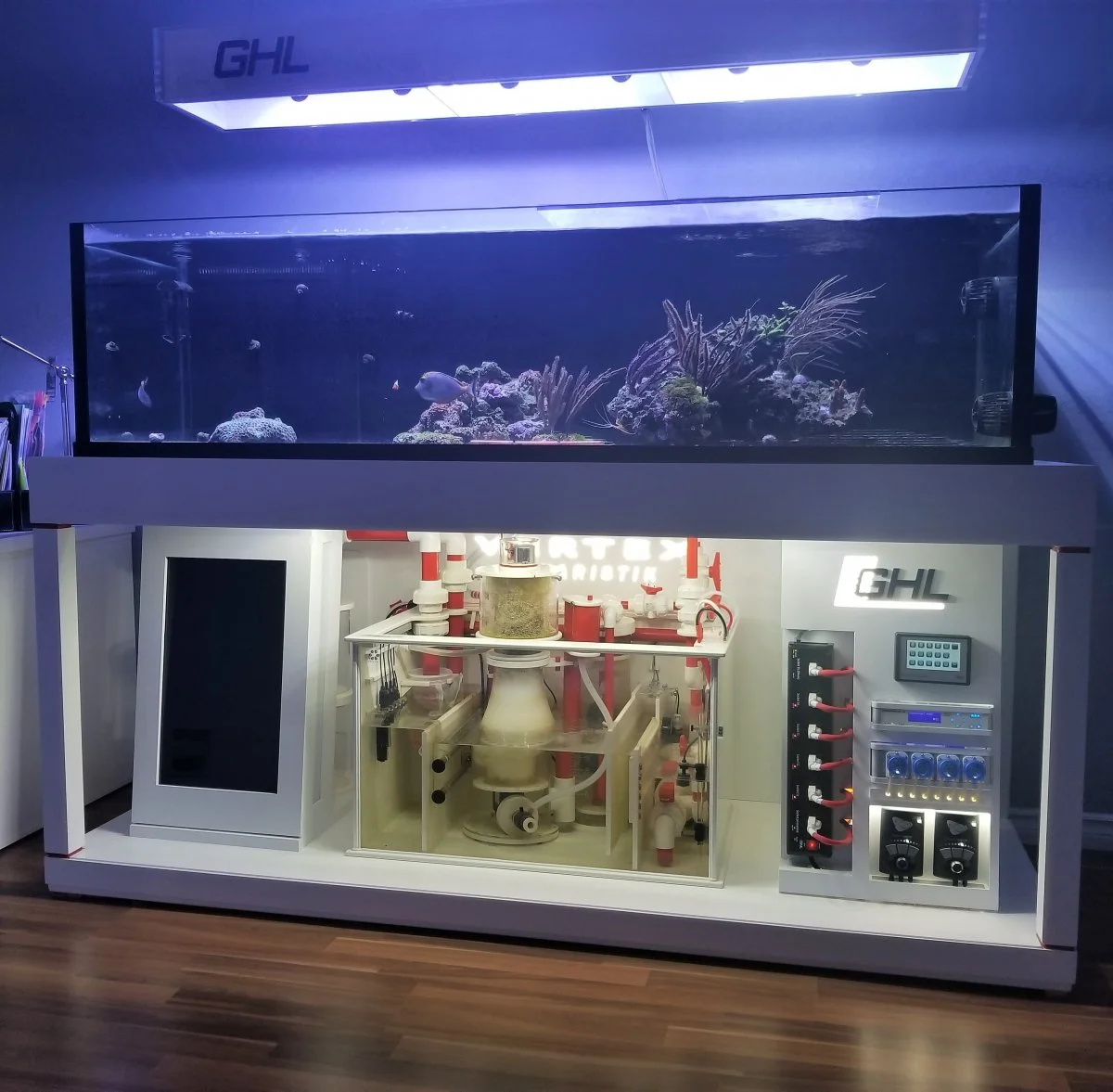Stunning 200-Gallon Reef Tank by Elder1945 | Reef2Reef

Tank Specifications
Volume: 200 Gallons / 757 Liters
Dimensions (L × W × H):
72.0" ×
19.0" ×
30.0"
182.9cm ×
48.3cm ×
76.2cm
Equipment List
- Salt: H2Ocean
Frequently Asked Questions
How do I choose the right tank size for my reef system?
Choosing the right tank size depends on the fish and corals you want to keep, as well as how much time and maintenance you're willing to invest. Larger tanks allow for more stability and are typically easier to maintain, while smaller tanks can be more challenging due to rapid changes in water parameters.
What basic equipment do I need to set up a reef tank?
For a basic reef setup, you will need the following equipment: a display tank, a sump (if preferred), a protein skimmer, a return pump, a heater, lighting suitable for corals, and water circulation pumps. Additional filtration like activated carbon and phosphate removers can greatly enhance water quality.
What should my target water parameters be for a reef tank?
For most reef tanks, aim for these parameters: Temperature: 78-79°F, pH: 7.9-8.4, Specific Gravity: 1.025-1.026, Nitrate (NO3): <5 ppm, Calcium (Ca): 400-450 ppm, Alkalinity (Alk): 8-10 dKH, Magnesium (Mg): 1250-1350 ppm, Phosphate (PO4): 0.02-0.1 ppm.
How often should I perform water changes?
Routine water changes of about 10-20% every month help maintain water quality and nutrient levels. Some tank owners prefer larger or more frequent changes based on their bioload and water testing results.
How do I set up a photoperiod for my corals?
A general photoperiod for reef tanks is about 8-12 hours of light per day, depending on the corals you keep. You can start with a short ramp-up time (1 hour) followed by steady lighting and then ramping down. For advanced setups, use programmable lights to simulate day/night cycles, cloud cover, and other natural effects.
What type of lighting is best for a reef tank?
LED lights are popular in reef tanks, providing sufficient light while being energy-efficient. You might also consider T5 fluorescent lights or Metal Halide, depending on the type of corals and your tank depth. Aim for lights that allow for full-spectrum coverage and are adjustable for intensity.
What should I feed my fish and corals?
Fish generally benefit from a varied diet including pellets, flakes, and frozen foods like PE mysis shrimp. Corals often thrive on specialized coral foods such as Reef-Roids, and some hobbyists supplement polyp foods and amino acids. It's important to research specific nutritional needs for both your fish and corals.
How do I manage and monitor tank parameters?
Investing in a good aquarium test kit is key to monitoring your water parameters regularly. You should test for pH, ammonia, nitrite, nitrate, calcium, alkalinity, magnesium, and phosphate. Automated systems like GHL Profilux can help manage parameters with dosing solutions.